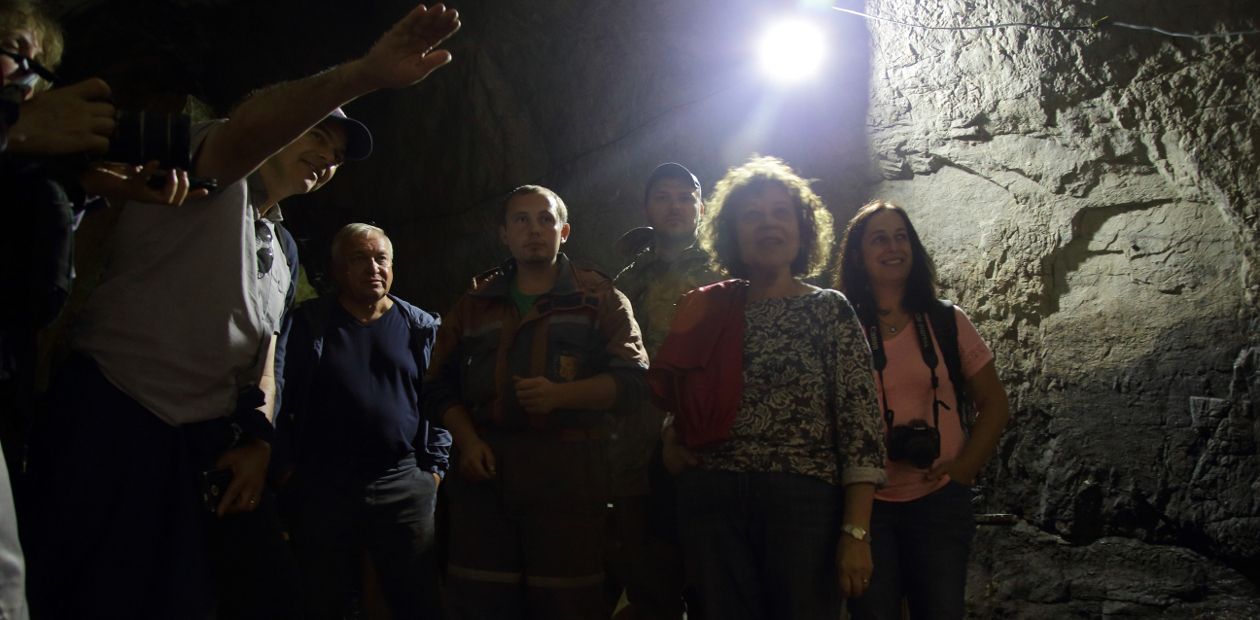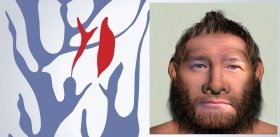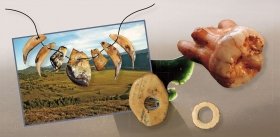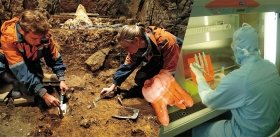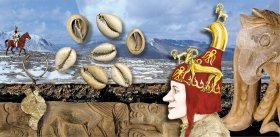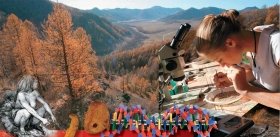Daughter of a Denisovan Father and a Neanderthal Mother, or Modern Humans as Product of Ancient Hybridization
Denisova Cave in the Altai Mountains has brought to the world another archaeological sensation: paleogenetic studies have revealed that the tiny fossil-bone fragment discovered in 2014 belongs to a first-generation offspring of two different representatives of the genus Homo—Denisovans and Neanderthals. This discovery was first announced at the International Symposium “The Origins of the Upper Paleolithic in Eurasia and the Evolution of the Genus Homo,” held in July 2018 at the Denisova Cave Research Center of the Institute of Archeology and Ethnography SB RAS (Novosibirsk), literally as close as a hundred meters to the discovery site. On August 22, 2018, Nature published an article with a detailed analysis of the fossil genome of the Denisovan–Neanderthal daughter as direct evidence of successful crossbreeding between different populations of ancient people
Although today many people still believe in the divine act of man’s creation, over the last hundred years, science has collected vast compelling evidence of the long and gradual evolution of our very distant ancestors, who branched about 6–7 million years ago from the common evolutionary trunk they shared with apes. However, human genesis turned out to be not near as simple and straightforward as the first researchers believed it to be.
Based on archaeological and anthropological findings, scientists put forward a hypothesis naming Africa the cradle of all mankind. Objective evidence to support this hypothesis came from the first genetic studies of modern human populations. The black continent gave rise to three waves of the Great Migration of Peoples to Eurasia: from Homo erectus about 2 million years ago to Homo sapiens about 80,000–60,000 years ago.
However, scientists’ opinions split on the further fate of these migrants. By the end of the last century, two main theories emerged: the monocentric one, according to which all modern people are the progeny of the last descendants from Africa, who ousted (wiped out) the indigenous population. A more humanistic version of this theory suggested the possibility of cultural and even genetic exchange between the indigenous population and the newcomers. The second, polycentric (multiregional) theory of human evolution assumed that the evolutionary development of man due to gene drift, natural selection, and other processes could have occurred not only in Africa but also in all the territories originally populated by Homo erectus.
This picture became much clearer through the development of paleogenetics, a science born in the 1980s, which was able to isolate and identify DNA sequences from archeological and paleontological remains and to investigate, from this perspective, vanished populations and extinct species.
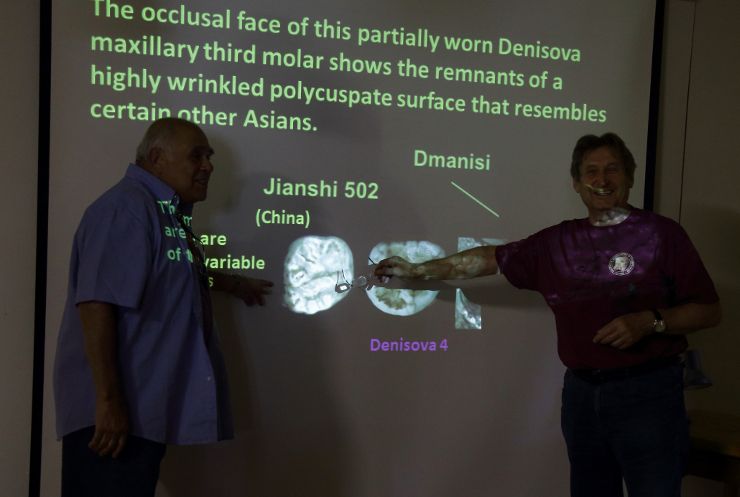
Until recently, one of the most likely candidates for the role of our ancestors has been the Neanderthal man, whose brain volume would match that of modern humans and who felt comfortable at temperate latitudes. However, based on the results of the first paleogenetic studies of the mitochondrial DNA from fossil bone remains, scientists inferred that the Neanderthals had been a dead-end branch of mankind. New results rehabilitated them only at the beginning of the new millennium, with the emergence of advanced DNA sequencing technology, able to “read” nuclear DNA and prove that the genome of an average human with non-African roots has 1–2% of Neanderthal genes.
The Max Planck Institute for Evolutionary Anthropology (Germany) analyzed bone anthropological remains of the Neanderthals, including specimens from the Altai caves—Denisova and Okladnikova. These specimens showed exceptional preservation due to a special temperature regime in the caves. Among them was a small bone from Denisova Cave—a phalanx of a child’s little finger, which created a real sensation.
Svante Pääbo, Director of the Department of Genetics at the Max Planck Institute, recalls that in the spring of 2009, they received another bone fragment from Anatoly Derevyanko, found the previous year in Denisova Cave. The bone was tiny, and Pääbo thought it unimportant and only decided to run some mtDNA tests, when time permits. But then came the unexpected: “On December 3, 2009, I was attending a meeting on the rat genome… As I walked from the dining hall to the lecture hall after breakfast, my cell phone rang. It was Johannes Krause calling from Leipzig and he sounded strangely excited. I asked him what the matter was. He asked me if I was sitting down. When I said no, he said I’d better sit down before hearing what he had to tell me…” The stunning news was the discovery of a new human species, unknown to science, which literally turned upside down the established ideas about the origin and evolution of Homo sapiens.
Paleogenetic analysis of the fossil bone remains of the Denisovan man showed that these hominins, like the Neanderthals, left a mark in the genome of many modern human populations, primarily in Melanesia and Australia, where the share of Denisovan genes reaches 5–6%. Judging by the genetic diversity, it was the Denisovans who dominated in North Asia in the Stone Age.
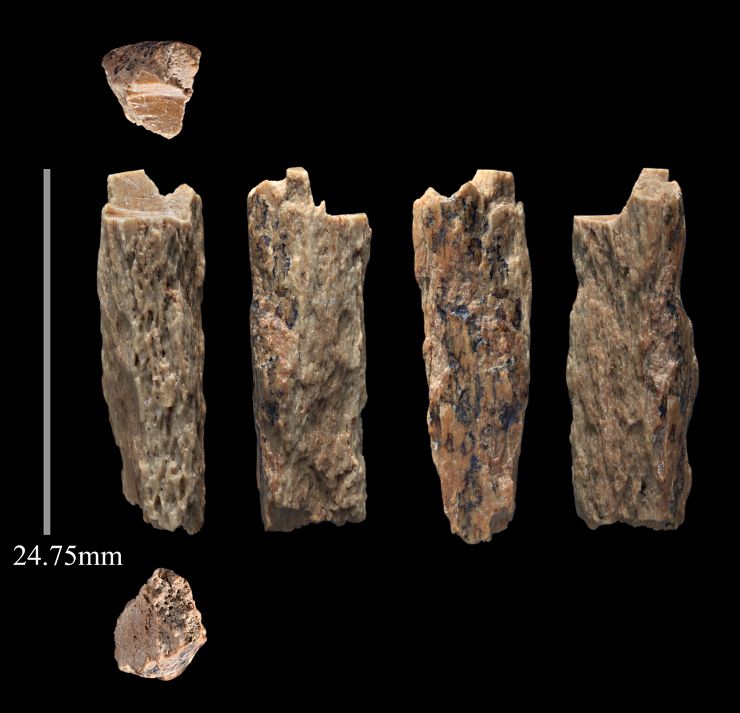
The fact that archaeologists find bone remains of the Denisovans and Neanderthals in the same cultural layers of Denisova Cave suggests that these hominins lived this area at the same time. But how did they get along with each other? We cannot answer this question decisively, but the last unique find speaks volumes. This small bone, whose exact position in the skeleton is yet unknown, belongs to a young crossbreed girl, whose nuclear DNA contains about 42% Denisovan genes and 39% Neanderthal ones. Considering the Neanderthal mitochondrial DNA, which is always inherited through maternal lineage, it can be argued that she was an offspring of a Denisovan father and a Neanderthal mother.
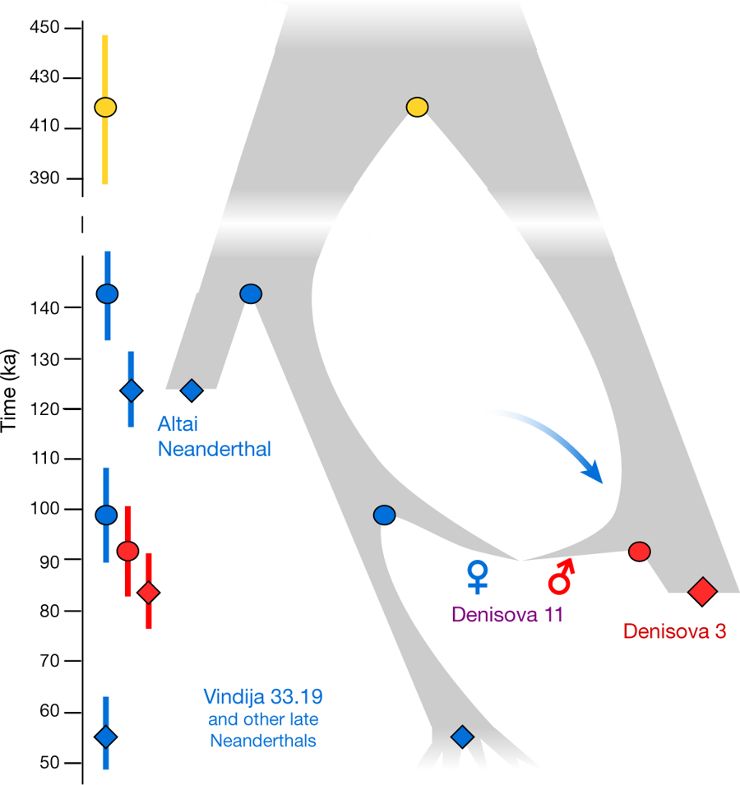
Moreover, studies have shown that the Denisovan father himself had had at least one Neanderthal ancestor, and the Neanderthal mother turns out to be genetically closer to the Neanderthals from the Croatian cave of Vindia rather than to her Altaic neighbors, i.e., could have belonged to relatively recent migrants from Eastern Europe.
Discovering direct evidence of successful crossbreeding between different representatives of ancient people, whose evolutionary paths diverged more than 390,000 years ago, is itself a unique event. Finding a first-generation hybrid among the few ancient specimens means that different groups of late Pleistocene hominins could have crossbred on a regular basis
Through paleogenetic research, today we know that the Neanderthals also crossbred with the ancestors of modern non-Africans and, probably, with the earlier ancestors of modern people, and the Denisovans mixed with the ancestors of the present population of Oceania and Asia. In the light of all these data, our family tree no longer looks like a tree—it has turned into a bush with interwoven branches. Moreover, paleogeneticists hope to test another bold assumption, claiming that the Denisovan genome could contain a spree of genes that merged into it from a yet unknown hominin that had separated from the ancestors of people of the modern physical type more than a million years ago and could have lived till the end of their days in secluded corners of Eurasia.
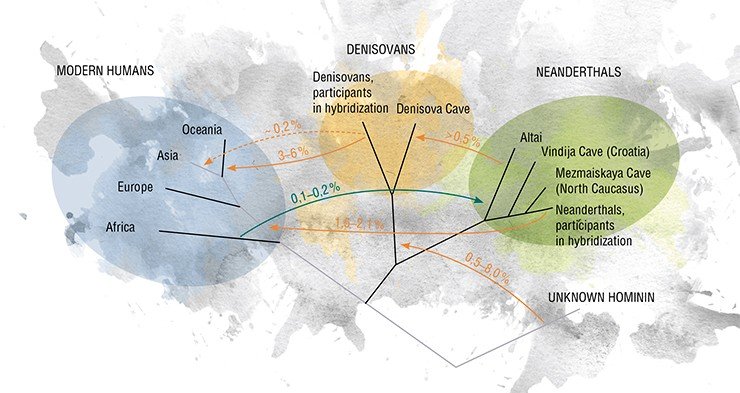
Academician Derevyanko believes that “the recent discovery in Denisova Cave holds utmost significance as it once again proves the existence of a constant exchange of genes between the ancient human populations that had formed in different territories. However, this exchange could have occurred only between different subspecies since crossbreeding between different species does not produce fertile offspring. Thus, this discovery confirms the hypothesis that several different subspecies of Homo sapiens took part in the evolution of modern mankind.”
More detailed information about this discovery and other materials on the development of modern mankind, which were presented at the International Symposium “The Origins of the Upper Paleolithic in Eurasia and the Evolution of the Genus Homo” (Denisova Cave, July 2018) will be published in future issues of SCIENCE First Hand
Slider photo: at the center, Mikhail V. Shunkov, RAS Corresponding Member, Director of the Institute of Archaeology and Ethnography SB RAS, and the head of the excavations Maxim B. Kozlikin, July 2018
Prepared by Larisa Ovchinnikova


